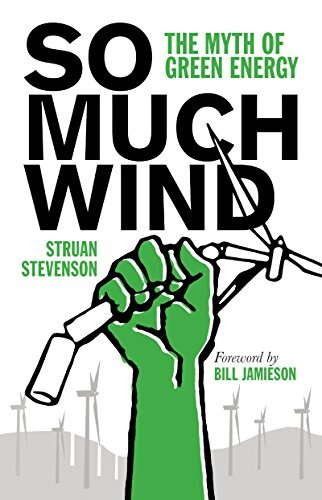As I begin to write this at 7:25pm on Sunday 15th March 2020, the UK’s national electricity grid is being powered by: 31% renewables (mainly wind & biomass), 11% nuclear, 44% CCGT, and 11% from the inter-connectors via our close friends and allies in Europe. I’ve chosen a random time. My guess is that a Sunday evening is a time with a fairly high electricity demand (and with 37.8GW currently being drawn that seems to be the case) and yet there is no coal required by our grid at all.
Before coronavirus took hold, 2020 looked like it was going to be an inflection point for climate engagement. With COP26 in Glasgow at the end of the year and 2019 news increasing dominated by Greta et al., it looked like this could be the only candidate for #1 theme of the year – hopefully that will return. It was in that mind-set that over the Christmas holidays I set myself a simple goal: to engage with those on the other side of debate with an open mind, to see if I can learn.
I had started this a couple of years ago by subscribing to and reading articles from The Telegraph and The Times. However, I found it difficult to engage with that content, that worldview if you will, without a contrarian or subversive feeling. Something I have heard from many people over the last few years is that we need to break down silos of thought; I fully subscribe to this, but how do you start in earnest? Well I started with a book that has been on my shelf for 7 years, ‘So Much Wind: The Myth of Green Energy’ (2013) by former Conservative EU Member of Parliament for Scotland, Struan Stevenson.
When I started my career in Scotland, Stevenson was a prominent critic of the ‘wind-rush’ that was in full swing. I bought the book as at the time I was engaged in the wind industry too; and whilst I was fully in favour of building out renewable energy, the regressive, profiteering nature of the industry got me down. I had seen Stevenson speaking at a debate held by the Spectator in 2012 and knew that even if I wasn’t going to agree with all he had to say, the book would be 1) honest (subjectively), and 2) forceful. Of course I didn’t even read a page in the intervening 7 years – taking to heart Umberto Eco’s philosophy that ‘read books are far less valuable than unread ones’.
I picked up the book now because times are going to change once more in the UK. Recently the government announced that onshore wind is back on the agenda for the CfD auction. Therefore, all of the criticisms leveled at onshore wind during its heyday of 2010-15 are potentially relevant again. Of course, some aspects have changed completely, including the support mechanisms and the relative costs of different energy sources, while other elements remain the same.
What Sticks from the Scathing Critique
Engaging with books you know you’re not going to agree with could have started better, I’ll be honest. The first page being titled ‘The Rape of Scotland’ and all. But I persevere in the search for relevant warnings and lessons. Ignoring clichés like ‘the lights going out’, and descriptions of people (‘eco-vandals’) building wind turbines (‘monsters’). Of course there is always the esoteric one that really gets me, the wilful misunderstanding of energy conversion efficiency for capacity factor.
From the offset it is abundantly clear that Stevenson is a keen and knowledgeable environmentalist, brute force is just his style. He has spent time on windfarms, talking to landowners, developers, communities – really getting to grips with issues that he truly cares about. However, like most polemics, it reads like an exercise in confirmation bias… I try to convince myself as I go that that’s his influence, not mine.
Despite this it is an important read and one which I wish I had taken the time over in 2013. Here I summarise the main points, splitting them in two buckets: ‘still relevant’ and ‘superseded’, not digging into topics I don’t understand, such as the emissions effect of building over peat bogs.
Still Relevant – Take HEED! (Chapter titles in bold)
- ‘Democracy Blowing in the Wind’. Stevenson argues that wind energy development is undemocratic, because in Scotland there is a mechanism to have a large-scale development ‘called-in’ for planning determination by the Scottish Government. Given the SNP’s pro-wind position, this takes powers away from local communities and councils who may be opposed, and gives it to the government who will be minded in favour.
In England the opposite has been true. Where local planning has been permitted, the government has called in and subsequently refused permissions. Of course a balanced position between these two, which respects local communities and focuses in on quality sites, would be ideal.
- ‘The Financial Scandal’. Stevenson explains the regressive nature of windfarm economics. Bill payers pay for landowners and investment funds to make a lot of money. Having worked for private and community clients, and made many a project cash flow model, it’s with a heavy heart that I completely agree with Stevenson. The wind energy industry to 2015 was a profiteering racket, and despite the work of amazing people in the community energy sector, most of the electricity produced, and therefore money made, is in the hands of people that least needed it.
- ‘Alternative Energy Sources’. First and foremost, energy efficiency was and is more important than any energy generation effort. Secondly, nuclear is espoused as a part of the mix. Stevenson agrees with a growing list of environmentalists and economists, including George Monbiot, Michael Liebrich and David Mackay, in imploring us to understand that achieving our goals (this was pre ‘net-zero’) without nuclear is extremely difficult. My only argument against is that we must stop pretending that nuclear is cheap – it can remain important without being cheap.
- ‘Impacts on Marine Ecosystems, Forests and Peat Bogs’. The carving up of Scotland’s national forest estate into concession areas for some of the largest wind energy companies was a national scandal. Stevenson only alludes to it briefly in the book as this was happening at the time he was writing. When public land is used, the public must benefit, it’s as simple as that.
Superseded – At Ease!
- ‘The Myth of Green Jobs’. In a similar way that nuclear power is expensive but sustains a lot of jobs, including in the defence sector (see work of Andy Stirling and Phil Johnstone), there is a theory that because wind power is ‘expensive’ it must also sustain a huge workforce. Alex Salmond once proposed that Scotland’s green economy would boast 130,000 jobs. I don’t know if that has been achieved, but certainly there are more than 300 wind energy jobs in Scotland, which is the lower estimate that Stevenson quotes.
The whole premise that the wind industry must support so many jobs, is that the electricity production actually comes at an economic cost. The argument is that due to wind energy the cost of bills will ‘double in the next 5 years’. Looking at the price rises from June 2013 to June 2018, I make the average price rise to have been around 22%, around 50% above inflation. The economics of onshore wind mean than any critique needs to revise, or throw out their anti-wind argument on economic lines.
- ‘Alternative Energy Sources’. Amazingly in only 7 years we can largely throw out the argument that CCS, fracking, etc. are viable alternatives to wind from a climate point of view as they improve on energy provision from coal. The status quo has well and truly changed!
Overall, whilst one of the core arguments of the book - that wind energy is expensive - is no longer true, there are many important issues raised. Both ‘what we do’ and ‘how we do it’ are important here, Stevenson’s experiences corroborated by my own, in that the ‘how’ has been sub-par.
Despite the tone of the book, I learned a lot from Struan Stevenson and appreciated his real experiences and efforts to seek out an alternative energy future. I agree that the wind industry has been self-serving and greedy, and must do much better when it gets another chance from next year. I recommend energy systems professionals give this a skim, and please send on recommendations for more ‘books I should read, but don’t really want to’.
It’s 8:50pm, there’s still no coal on the grid. We’ve come an enormously long way despite innumerable setbacks. Even so - the next wave of wind energy developments can be done in a more equitable way, and engaging with the critics might be a good way to start.


